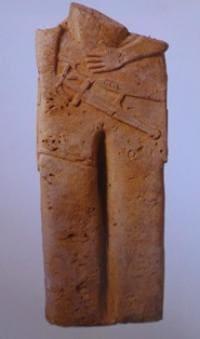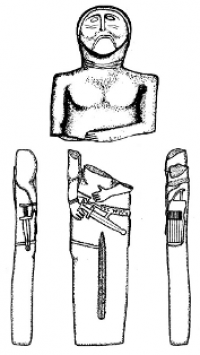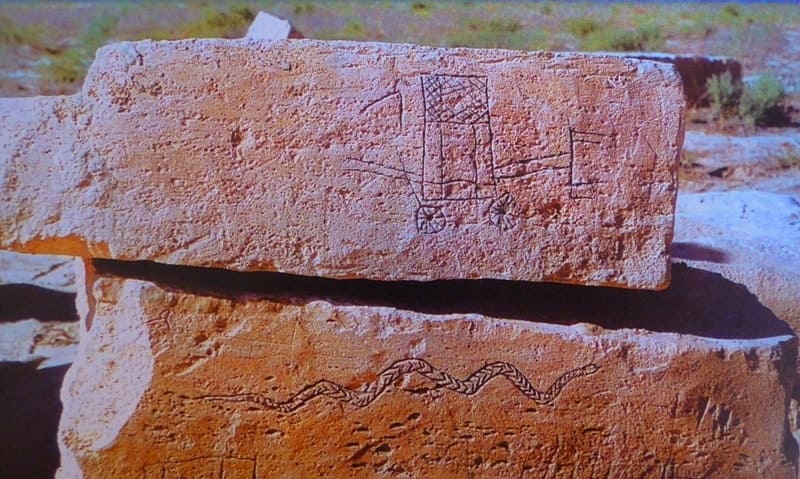You are here
Bayte sanctuary complex.


Guide to nature of Mangystau.
“Some of the fragments were so massive that it was impossible for one person to move them from their place. Probably, this gallery presented an impressive sight in the rays of the sun. Their faces were turned there, towards the sunset, towards the “land of the dead...”
Lev Galkin. Magazine "Around the World", 1994.
Weekend routes through necropolises of Mangistau.
Bayte-I sanctuary is located at an altitude of 165 meters above sea level, located 3.7 kilometers east and slightly south of the railway junction No. 6, 53.2 kilometers northeast of the Sai-Utes station, 7 kilometers north -west of the Bayte III sanctuary.
Bayte-II sanctuary is located at an altitude of 146 meters above sea level, located 10.6 kilometers southeast of the railway junction No. 6, 56.9 kilometers northeast of the Sai-Utes station, 12.9 kilometers on northeast of the Bayte III sanctuary.
Baite-III sanctuary is located at an altitude of 178 meters above sea level, located 7.3 kilometers southwest from the railway junction No. 6, 44.3 kilometers northeast from the Sai-Utes station, 12.9 kilometers on southwest of the Bayte II sanctuary. All sanctuaries are located in the Mangystau district of the region of the same name.
Bayte, cult monuments of the IInd half of the Ist millennium BC. e. are located in the north of the Ustyurt plateau. Research by the Institute of Archaeology of the Russian Academy of Sciences has been carried out since 1984. Includes 4 complexes, which include groups of sculptures, stelae, displays, “sacrificial tables”, bowl-shaped sacrifices ki from stone and 3 mound groups.
The sanctuary of Bayte-III, partially the sanctuary of Bayte-I and Bayte-IV (up to 100 sculptures and steles and 250 fragments) have been completely explored. Almost all the sculptures are famous anthropomorphic figures with swords, daggers, and lu lumps and arrows, smooth helmets, belts with a hook-clasp,bracelets in the IVth – IInd centuries BC. e. among the Iranian-speaking nomads of Western, Central and Middle East. Asia.
They assume that the sculptures are connected with the cycle of representations about the heroes who live it was time to make sacrifices. In terms of the number and variety of structures and sculptures, Bayte is a unique cultural monument in the steppes of Europe razii.
In the west of the Ustyurt plateau, in the area of the Bayte wells, archaeologists discovered about 70 statues of male warriors - as many Scythian stone steles were found in the steppes of the Black Sea region during 100 years of searching.
The sanctuary was discovered in 1983. Until 1988, they were studied by the Volga-Ural expedition of the Moscow Archaeological Institute, since 1990 - by the West Kazakhstan Archaeological Expedition, Institute of Archeology (headed by Z. Samashev).
There are 3 shrines in the complex. The area of the first sanctuary of Baite-I is 50,000 square meters. The height of the religious building, surrounded by small embankments, is 3 meters. Morphologically, they all belong to flat sculptures, less often to anthropomorphic pillars, and even less often to rounded sculptures.
Iconographically, they reproduce the figures of standing armed warriors, mostly men. The pose is almost canonical: the left arm is bent at the elbow and pressed to the stomach, the right arm is lowered and pressed to the thigh.
It should be emphasized that on individual sculptures there are carved tamga signs that exactly coincide with the known Sarmatian tamgas from the vast zone of the steppes, the North Caucasus and the Black Sea region.
On some slabs in the design of Bayte III, tamga-like signs, images of snakes, a cart, a deer, an archer on a horse, ornamental compositions, and various geometric figures were found. As the embodiment of the artistic views of their authors and builders, these monuments are true masterpieces of architecture and amaze with their pristine perfection.
Could this happen suddenly, out of nowhere? No. They were influenced by the cultural heritage of the ancient Sakas, whose decorative and applied art is replete with relief images and scenes in the style of “ethnographic realism”.
Geographic coordinates of Bayte I sanctuary: N44°35'53 E54°05'03
Geographic coordinates of Baite II sanctuary: N44°34'11 E54°09'49
Geographic coordinates of Bayte III sanctuary: N44°32'13 E54°00'30

Authority and photos by:
Malbagar Mendikulov. “Monuments of folk architecture of Western Kazakhstan”, Alma-Ata, 1987. Lev Galkin, Around the World magazine, 1994. No. 12 (2651)
https://old.bigenc.ru/archeology/text/1846205
Photos by:
Taken from the album “Kulpytas”, Imangali Tasmagambetov, Astana, 2002.







